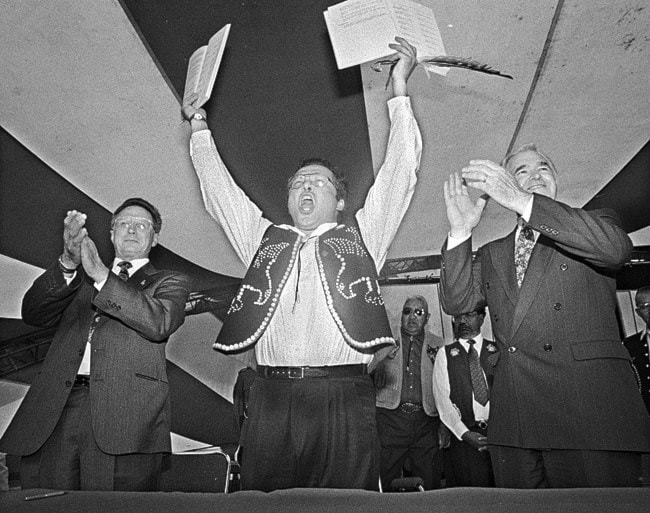Shirlee Frost has discovered that young Yukoners, newcomers, and federal and First Nations government workers know the least about Yukon First Nations’ final and self-government agreements.
Frost is the Vuntut Gwitchin representative on the implementation working group, which is made up of representatives from the 11 self-governing First Nations and the territorial and federal governments
She has come to these conclusions from her experience as a federal worker and from a 2011 telephone survey the implementation working group commissioned to gauge Yukoners’ knowledge of the pioneering agreements.
While the territorial government offers training to its employees on the agreements, the federal – and most First Nation governments do not, she said.
“It was very interesting,” Frost said of the survey and its results.
But it was also a bit disappointing.
The survey found that non-First Nation people know the least about the agreements because they think the agreements only affect First Nation people.
“But these agreements are for the benefit of everyone, all Yukoners,” said Frost.
“They lay the foundation for a unique and involving governance model that impacts all of us. It’s incumbent upon us to understand and embrace this.”
In the hopes of helping to educate the public, the group has started an information campaign called, Mapping the Way.
It includes a series of four newspaper ads as well as a comprehensive website.
The ads feature an Air North plane, the Kwanlin Dun Cultural Centre in Whitehorse, the Da Ku Cultural Centre in Haines Junction and Tombstone Territorial Park.
All four examples are a result of the land claim agreements. And all four benefit both First Nation and non-First Nation people.
It’s been almost 20 years since the Umbrella Final Agreement was signed in 1993. It served as the basis for the 11 agreements. And overall, the agreements are just the beginning, said Frost.
“I truly believe we’ve come a long way,” she said. “But we’ve got a ways to go.”
For example, Frost still hopes to see 100 per cent employment and educational success for her people.
“But we’ll get there one day,” she said. “We just all have to work together because the social cost is too much not to. It’s too big of a cost for Yukon not to embrace this, so all chapters of society can benefit.”
The agreements also lay out legal and financial guidelines for business negotiations and future development planning.
And they have helped give First Nation groups the foundation and the confidence to stand up for themselves as a people with rights, and as governments with land holdings.
“That’s healthy,” said Frost. “I look at those (issues) as opportunities.”
Despite the survey’s poor findings of the public’s knowledge of land claims, in general Yukoners are aware the agreements exist, said Frost.
They also know that the territory’s First Nations are truly leading the way for the country and much of the world, she said.
“I believe that the settling of land claims and signing of self-government agreements strengthens the Yukon’s social and economic fabric, as well as political,” said Frost.
“We really need to work together as Yukoners. This is our home. If you want to call this home, then we need to work together so we all benefit.”
Contact Roxanne Stasyszyn at
roxannes@yukon-news.com
